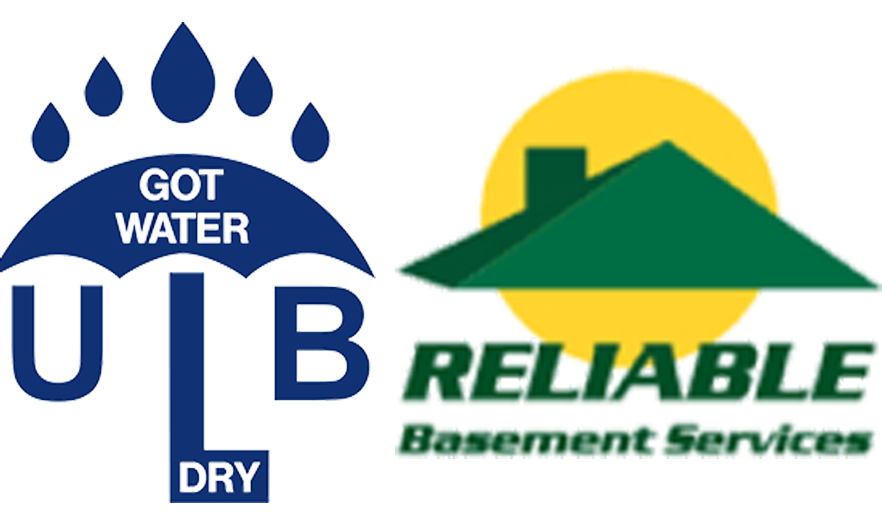This post was updated on 7/19/17 to reflect the latest available information.
Hydro-static pressure is a term commonly used to describe the amount of force exhibited by the water under the floor slab. Why would there be water under the floor slab? Because the soil around the house was disturbed to pour the foundation, therefore water will want to seek its lowest point or level, which is now the area near the floor slab. Fortunately, Chicago basement waterproofing can fix basement leaks Lombard home owners rquire.
Why Would Water in the Soil Lead to Basement Leaks Lombard Residents Must Deal With?
Water around the base of the foundation is not uncommon. as a matter of fact, it is anticipated. If the excessive hydro-static pressure is left unresolved, seepage may occur up through the cracks in the floor. However, the more common point of egress would be the seam between the floor slab and the foundation walls, known as the cove joint.
In the early 50s, it had become code to install drainage tile down next to the footer. Originally, these tiles were 12-inches long by 4-inches round pieces of baked clay, laid end-to-end. To allow the water to seep into the tile, a small gap was left between the pieces. However, since there is no filter material covering these gaps, it also allowed for dirt, tree roots and other fine debris to enter the tile as well. A second problem with clay tiles is that they are almost never glazed, like the lines used for sewer installs. Clay, being an organic material, naturally breaks down over time and collapses. As a result, the tile may need to be replaced and resealed to fix basement leaks. This is where basement waterproofing contractors in Park Ridge come into play.
How Can Oak Brook Waterproofing Contractors Fix the Problem?
In order to rectify this problem, most new tiles are made of either polyethylene plastic or ridged PVC. However, if a filter sock is not wrapped around the piping, the possibility of a clog will still exist. A cloged, broken or collapsed tile will result in a system failure. Since the system is next to the footer and out of sight, a problem is not detected until seepage occurs.
Just as important to a properly functioning weeping tile system, the final destination of the water must be collected and discharged by the tile. This is why 90% or more of all drainage tile systems carry the water to a sump pump basin.
As the water collects in the basin, a sump pump ejects the water safely away. Where it eventually winds up is based on your village codes. Most sump pumps discharge the water back to splash. This is just another way of saying, back out to grade. More and more cities are beginning to require the discharge be connected directly to the storm drain. This may require a new run of 4-inch piping from the house to the city’s storm drain. Unfortunately, if required, this is an additional charge beyond the initial tile install.
What About the Sump Pump?
When choosing the correct sump pump, the two, most important things to consider are the volume of water being pump and the style of basin the pump will be located in. However, there are a couple other things to think about when looking for your ideal sump pump.
- Consider the head at which the water will be pumped. The head refers to the distance from the base of the pump to the top height of the discharge line just before the line angles towards its final destination.
- Secondly, consider the depth of the pit in reference to the bottom of the inlet from the drain tile. In order to prevent the tile system from getting backcharged with water, you need the pump to activate before the water rises above the bottom of the inlet tile. This is critical when trying to fix basement leaks Naperville citizens may experience.
Submersible storm water sump pumps come with one of three different types of float mechanism and a varying horsepower (HP), which include the following:
- The most fail-safe float design is what is referred to as a mechanical float. This is the style of float which looks like a small ball or bulb that rides up and down on a small shaft attached to the pump, much like the float-shut off switch in the back of a toilet.
- Another type would be a tethered switch, which is a small bulb on the end of a cable that rises with the water level. When the bulb turns almost upside down, the electrodes in the unit make contact and activate the pump. However, as this float is a free moving extension off the pump, it is prone to getting jammed against the side of the basin and not turning on the pump.
- The last style of float is a pressure diaphragm. This is a small canister attached to the base of the pump. As water builds up in the basin, water pressure will push up on the rubber diaphragm causing the two contacts to meet turning on the unit. There are two draw backs to this type of float. First, the pit will have to be cleaned on a regular basis. If dirt and debris cover the bottom of the float, it affects the amount of pressure needed to activate the pump. Additionally, this pump will require an average water depth of 14 inches in the pit before the pump activates.
The HP needed is based on the total footage of the tile connected to the sump pump and volume of water anticipated. Two common pump designs used to fix basement leaks Lombard residents have include the following
- In most smaller homes, a good 1/3 HP pump will discharge approximately 36 gallons per minute, or about 2400 gallons per minute at a 10-foot head.
- An average 1/2 HP pump will kick out around 60 gallons per minute or 3600 gallons per hour at a 10-foot head.
Of course, there are other options available for more drastic volumes of water. This is a key concern for waterproofing basements in high-precipitation areas, like towns and cities surrounding Chicago and the Great Lakes.
Let the Basement Waterproofing Experts Fix Basement Leaks Lombard Home Owners Can Rely On.
While hydro-static water pressure is inevitable, a proper drain tile and sump pump system can reduce it as a source of damaging water seepage. In other words, you can extend the life expectancy of your home and its value by taking steps to prevent the buildup of water that results from hydro-static pressure.
Contact ULB-Dry online today to find out more about you can prevent damage from water seepage through basement waterproofing in Lombard.





